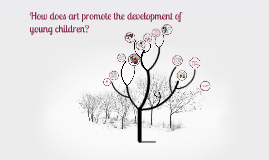Documentation Presentation
Transcript: DOCUMENTATION PRESENTATION DEVELOPMENT PROPOSAL AFRICA KANGA The kanga which comes from the old Bantu verb to wrap or close, is a colourful garment similar to kitenge, worn by women and occasionally by men throughout Eastern Africa. It is a piece of printed cotton fabric, about 1.5m by 1m, often with a border along all four sides (called pindo in Swahili), and a central part (mji) which differs in design from the borders. Kangas are usually very colorful. decorative cloth Origins: Affluence from Slavery As with many cornerstones of national culture, there are varying accounts of how they were developed, except for one factor- slavery. As slaves, women were only allowed to wear one garment: a white piece of cotton cloth wrapped around themselves like a dress or shawl. In 1833, Britain ratified the Slavery Abolition Act, which declared all slaves in the British Empire free. While the bodies of these men and women were liberated, the minds of their countrymen were not- a stigma persisted against those that could be identified as former slaves and often this could be ascertained by the old white garment of bondage. Needless to say, a change of costume was needed. Here's where the story splits. Some say the kanga began when newly-emancipated women painted the white slave cloth with color. The predominant theory is that resourceful ladies in the port cities would purchase or trade handkerchiefs, cut six of these apart, and sew them together into individualized garment cloths. No matter how they developed, it gave women who were former slaves a new identity and sense of self-worth. The color, design, and arrangement of their kanga became a blank canvas upon which they could unleash their self-expression. In these early days of kanga, floral, linear, and Islamic-inspired geometric designs were popular. As demand increased European, Indian, and Middle Eastern traders saw the worth in selling more varieties and colors (and the cunning idea to sell entire cloths rather than just handkerchiefs). Sayings began to be printed in the 1930s and caught on quickly. SWAHILI FASHION WEEK MAASAI TRIBE history of batik Batik is older than history, with traces even laced in the wrappings of Egyptian mummies. They were as good as gold for much of history, and were enthusiastically traded among Asian neighbors as early as the seventh century. Europeans entered the mix much later, but they became the major pushers of “woven cargoes” from the seventeenth century on, and some colonial powers, most notably the Dutch (during their Golden Age), had a heavy hand in industrializing the technique. Of course, this doesn’t quite explain how, or when, batik got to Africa. Dutch Scholar Ineke van Kessel suggests the fabrics came from India to West Africa by land, not sea, over the ancient trans-Saharan routes. Local populations like the Yoruba in Nigeria incorporated aspects of the wax printing into their tradition textiles, and little by little the trend caught on. When the Dutch and English began trolling the coast of West Africa in the seventeenth century, they brought their wax (wax batiks) and non-wax (roller prints) fabrics, targeting a local population already poised for their consumption. With time, they began tailoring their European-produced prints to refined African tastes, tweaking designs down to each region and port. Batik, in its original handcrafted form, and its derivative roller print are highly cherished across West Africa today. Prints range from abstract geometry to figurative images, and beyond. For many men and women, the patterns are a form of expression and even communication, announcing everything from their marital status and mood, to their political and religious beliefs. Up until the 1960s most wax prints were still produced in Europe, but in the post-colonial era, that all changed. Ghana boasts three of the finest wax print manufacturers in Africa. Unfortunately, legal and illegal Chinese and Nigerian copies have flooded the markets of late, and many, have seriously suffered. 2 STATEMENT OF FINALIZED THEME The theme of my series of paintings is the exploration of African art as a way to establish cultural belonging. 3 Devolopment of Works inspiration A traditional batik cloth purchased in Kenya Experimentation with batik art with YAAV Reflection of everyday African lifestyle African fashion artist, art movements, and culture David Kibuuka David Kibuuka started painting at an early age in Uganda. His talent became quickly apparent at the age of 11 as he was able to sell his paintings in art galleries, such as Nomo Gallery in Kampala. At that time, David’s strength was pencil drawing and water color. He was introduced to batik by his secondary school art teacher, Joseph Mungaya, who worked in the traditional batik technique. This was the first time David would see art being created on fabric with the use of wax and dyes. As Mungaya finished a series of batiks he was obligated to send them to Nairobi, Kenya to be sold

















